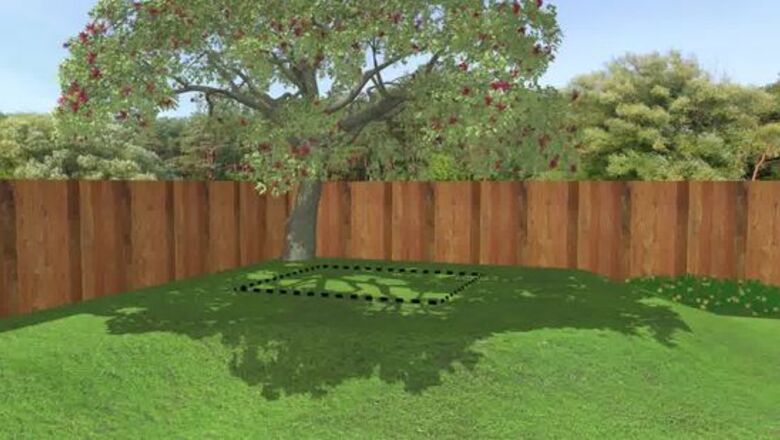
views
Building a sandbox may not be child's play, but it is very easy, and can be done in an afternoon. Not only will it give you great satisfaction, it will make you the local hero to your kids!
Preparing the Location
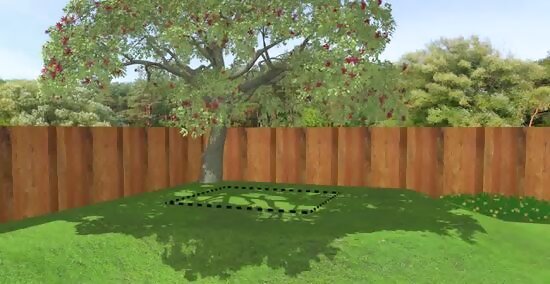
Pick a location at which to put the sandbox. It's important to keep a few basic things in mind when planning where to put your sandbox. The location is going to be one of the more important things to pick out before you start. Shade. Your kids will want to spend hours in the sandbox, so make sure it's someplace that is protected from the sun's harmful UV rays. This can be near the house or a shade tree (be careful you don't damage the roots when digging). It can also be a portable patio umbrella, which has the advantage of being able to be placed where needed for maximum shade. Sight. Make sure your sandbox is easily within the line of sight so that the adults watching the children can keep an eye on them. Drainage. After a summer shower, you'll want to make sure your sandbox can drain naturally, so build it at a higher elevation if possible, and definitely not in a low spot in your yard. Try to build it so that there will be a slight slope. This will help with drainage.
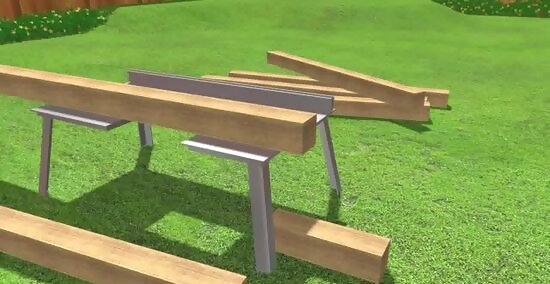
Get lumber in the right size. Determine how long you want each side to be and purchase lumber so that it is 3-1/2" shorter than that, assuming you can stipulate how long you want your boards to be when you purchase them. If not, you can cut them to size yourself. For this example, we'll assume a 6' square sandbox, so cut each board to 5'8-1/2" in length. If you have a circular saw, you can do this yourself. If not, your lumberyard will be able to do this step for you. 4x4 lumber is actually only 3-1/2 x 3-1/2 square. To make this sandbox you will be joining the boards together, and this is why the individual boards need to be shorter by this amount.
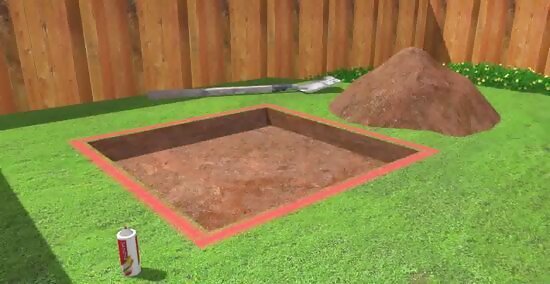
Set your boundaries. Mark the outside perimeter of the boards, remove them, and dig out inside that perimeter to a depth of six inches. Always make sure to call the Digline at 811 first to ensure that it is safe to dig in a particular area.
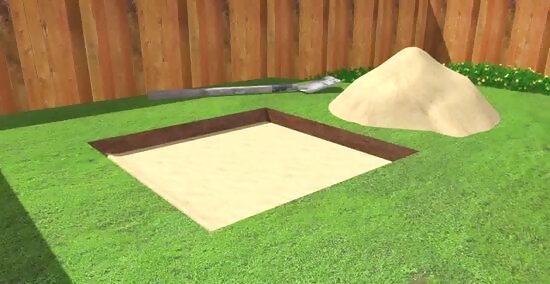
Add a layer of sand. Make it about 4" wide and 1" to 2" deep. The bottom layer of boards will sit on this sand bed, and if the ground is not perfectly level, the sand bed will help you level the boards.
Building the Box
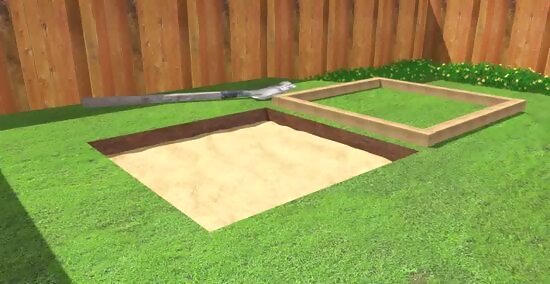
Lay out your boards. Lay down the first layer of boards as in the shape of a square.
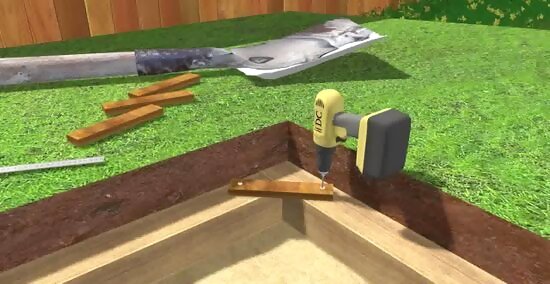
Place the first layer of boards onto the sand bed. Use a framing square to make sure each of the four corners are square, and tack them into place by screwing the scrap lumber across the corners.
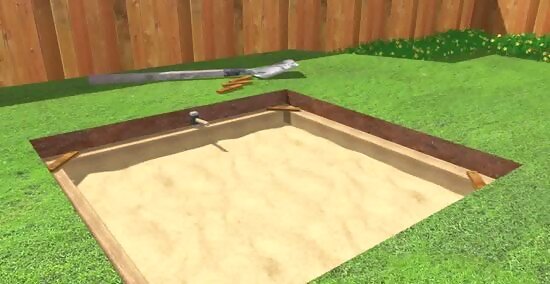
Level the first layer. Once your first layer is tacked together and square on all 4 corners, level it with the rubber mallet, tapping each side into the sand, and checking the level frequently. Make sure it is level all around.
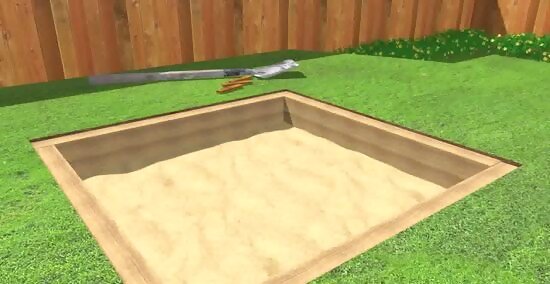
Add the second layer. Carefully remove the temporary corner tacks, and lay down the second layer of boards overlapping the first layer, as shown:
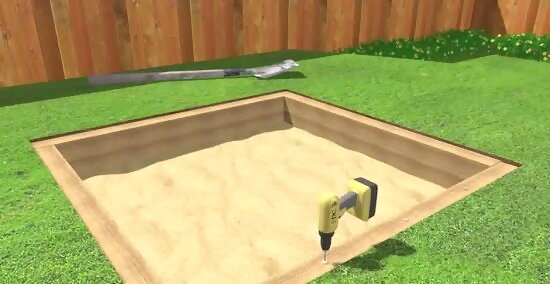
Screw the first two layers together. Using a drill driver, attach the second layer to the first layer using 6" self-tapping timber screws. Space them evenly, three on each side. Pre-drill a pilot hole at least half the diameter of the 6" screw to help with installing screws to the base.
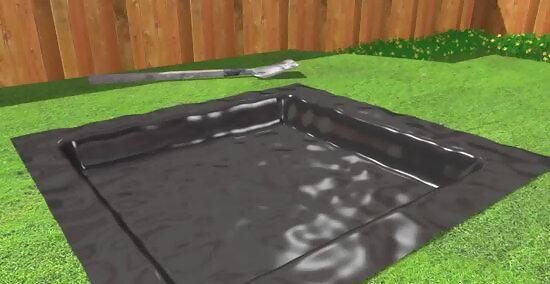
Line the box. Lay a sheet of landscaping fabric across the sandbox so that it overlaps the second layer, and work it all around the edges and bottom of the sandbox pit so that it completely covers everything. This will allow water to drain out, and keep weeds from finding a new home.
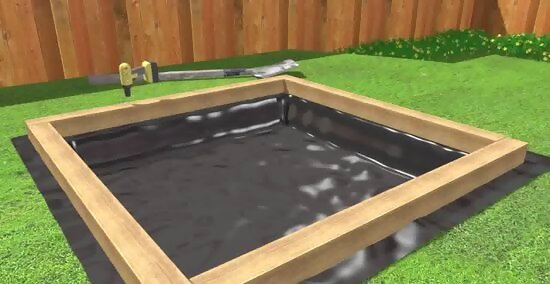
Add the final layer. Using the same overlapping method as the second layer, lay down the third layer of boards, and screw them together with the timber screws. Be sure to offset the screws from the ones below!
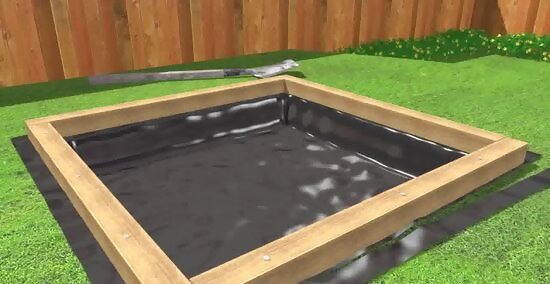
Trim the fabric. Using heavy duty scissors or a utility knife, trim away the extra landscaping fabric.
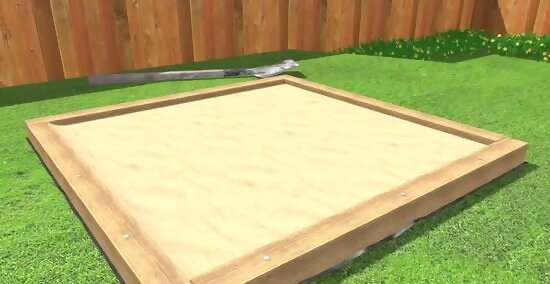
Add sand! To determine how much sand you will need, use this formula: Multiply the length x width x depth (don't fill it all the way to the top), and then divide that number by 27. This will give you the amount of sand in cubic feet you'll need to fill your sandbox. Make sure you use play sand, as this has been cleaned and is much less dirty than building sand.
Building a Cover
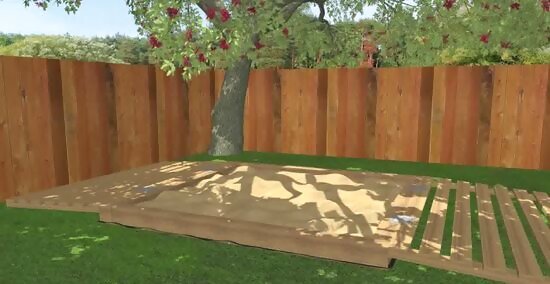
Make a cover. You will want to have some kind of cover on your sandbox. The danger is that wild animals or even domestic ones love to poop in kids' sandboxes! Oh no! You can build a basic cover by getting two doors and attaching them with hinges to the outside of the wooden frame of the box, or you can follow the directions below to make two benches which slide over the box. This bench allows you to pull it only partially, creating seating at the side of the box for mommy or daddy, while junior plays in the sand.
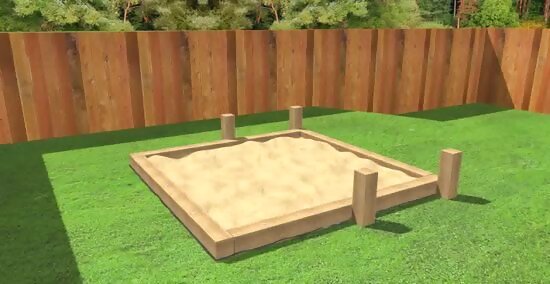
Get eight posts. These posts should be made of 4x4 lumber. Their length will be determined by how high you made your sandbox. They will need to be at least 5" higher (from the ground) than the box. There will be four posts used for each of the two benches.
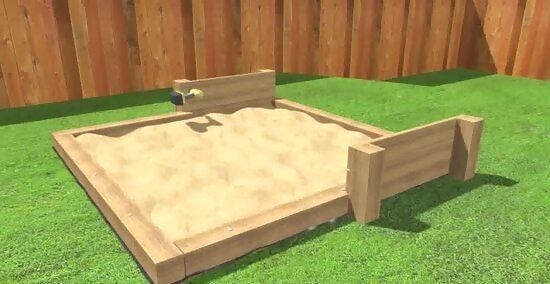
Create the short sides. Get eight 1x4s to join the posts together (4 for each bench). The length of the boards are very dependent on the six of the box you built. Once the boards are cut to size, use 2 wood screws (at least 2" in length) at each end and attach the board so that the top of the boards are flush with the end of the posts and the ends of the boards are flush with the sides of the posts. In the example used above where the box is 6'x6', the short-end joining board would need to be ~38 3/4". The formula for figuring out the length of the short end joining boards is 1/2 the length of your box + ~2.75".
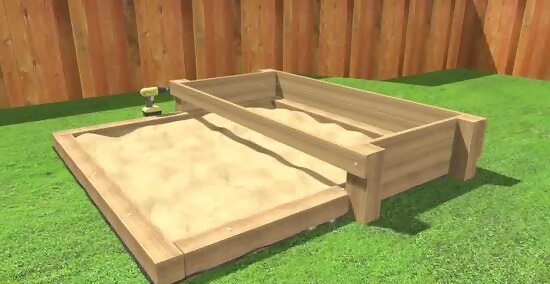
Join the short ends together. Get six 1x4s (3 for each bench). These will form the long sides of the bench. Again, the length will depend on how long the sides of your sandbox are. The short end joining boards will face the "inside" of the bench, while the long boards will need to be attached to the outside (again, flush with the sides of the posts, as well as the top and bottom). One side of each bench will only have a long board at the top and not at the bottom. Secure with 2 wood screws at each end. In the example used above where the box is 6'x6', the long boards would need to be ~6'9". The formula for figuring out the length of the long side joining boards is your total sandbox side length + ~9".
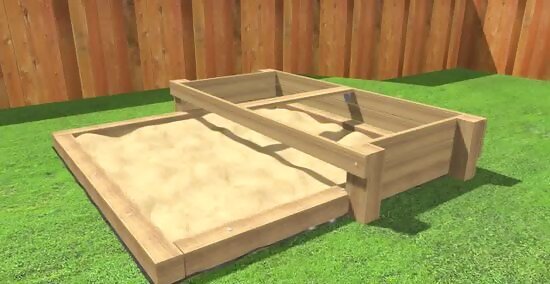
Attach a brace beam. Take two more 1x4s, the same length as your short end joining boards, and attach one to each bench, between the long side boards, using brackets. The support beam should have the wide side facing up, and be flush with the tops of the long side boards. Make sure the brackets are small enough to fit underneath the support beam without going below the bottom edge of the long side boards. Make your job easier later by marking the center line of the support beam on the front of the long side board. This will later be used to figure out where to nail the seat of the bench.
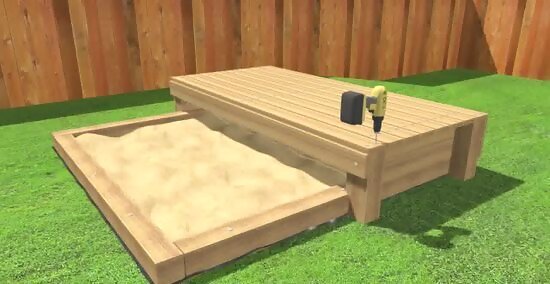
Attach the seat. Take 1x4s the same length as your long side boards and nail or screw them at the ends and the center to the top of the bench. You should use two screws/nails at each end and at the center. Lay the boards out first, starting from one side and progressing to the other. Place 1/4" tile spacers between each board as you lay them out. If you're following the example, you'll want 10 boards for each bench, plus an extra which will need to be split lengthwise down the middle with each bench taking a half. In other words, 21 boards total. Use a table saw or jigsaw to cut the board down the center. The spacers between the boards allow air to circulate, helping to prevent mold, but do not allow naughty cats in! If you're having trouble finding the center to nail down the boards, either measure for the center or use the guideline you put in when you made the brace beam.
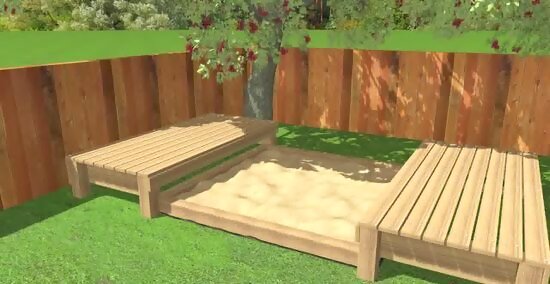
Slide the benches together over the box to close it. Open them only part way, so that the seat stops at the edge of the sandbox, in order to creating seating for kids and adults alike.
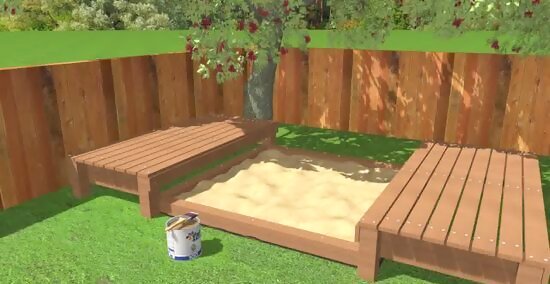
Stain the wood to protect it. You will also want to remove the cover with regularity to prevent mold growth.


















Comments
0 comment